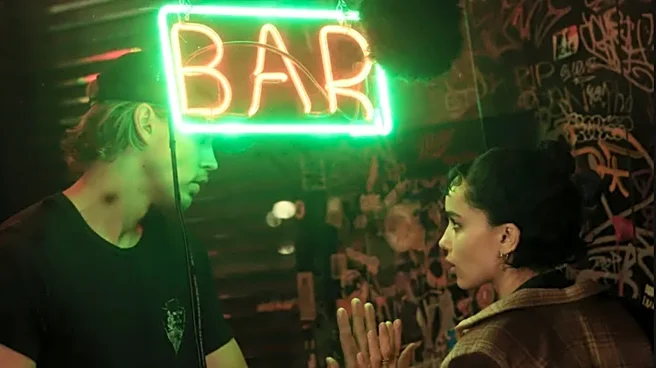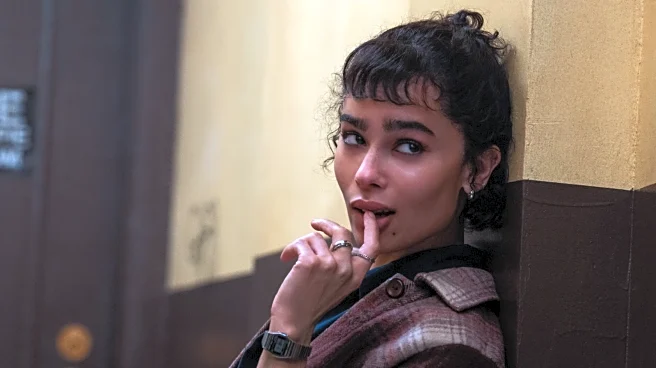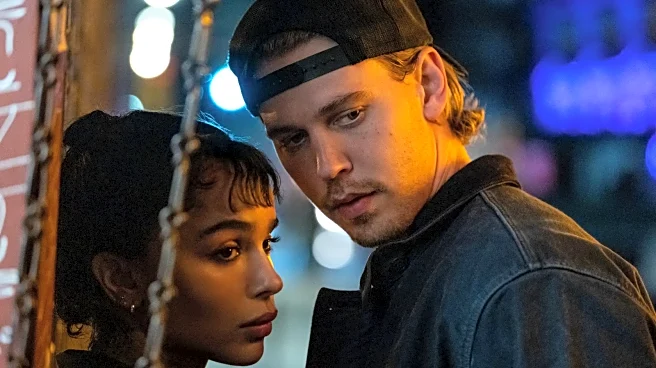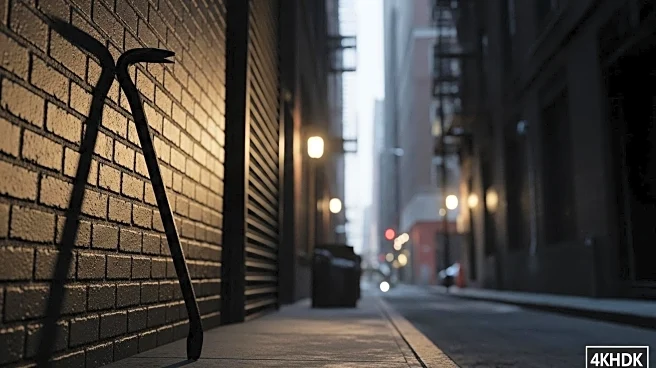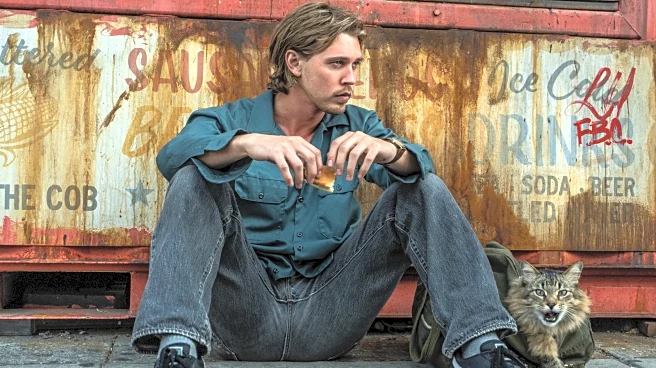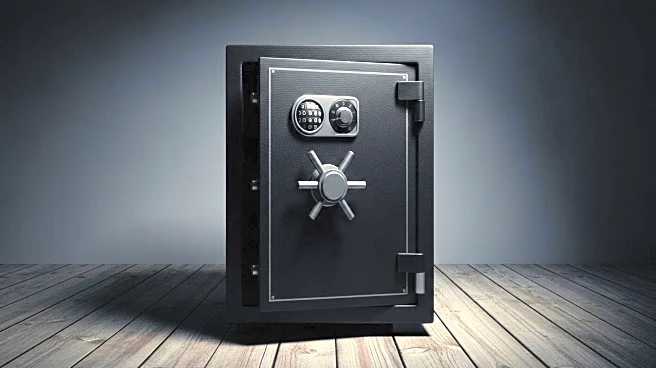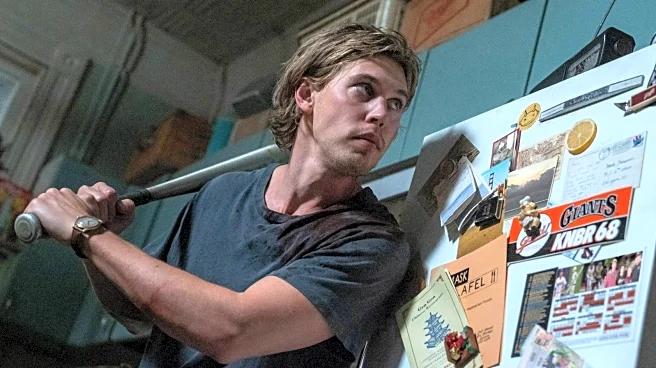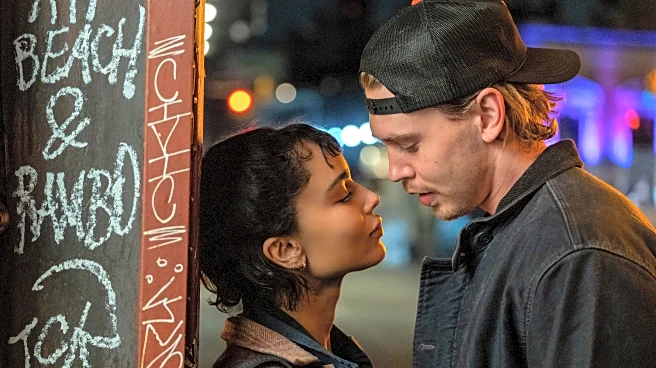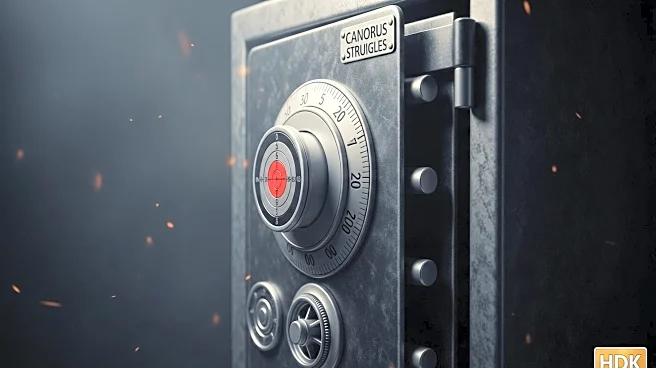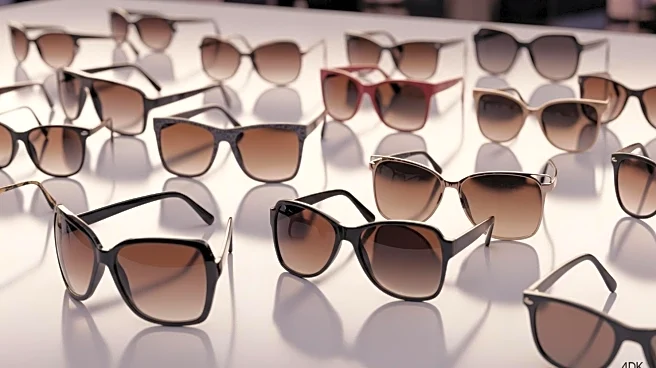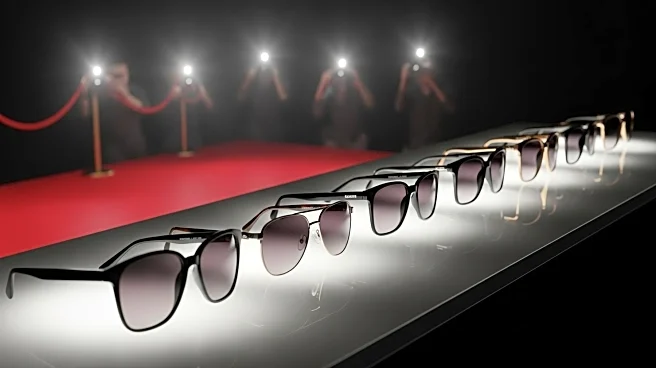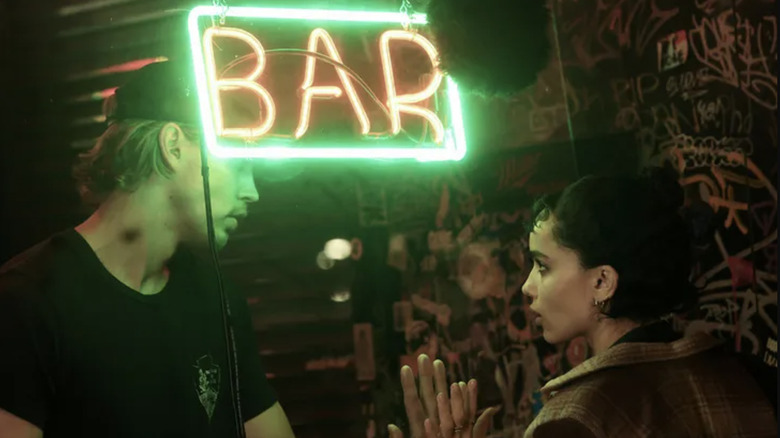
There are a handful of neat little references throughout Darren Aronofosky's latest film, "Caught Stealing." Most of these have to do with the film's chosen setting, New York City in 1998. There's a moment when the film's protagonist, Hank (Austin Butler), walks by Kim's Video, a famous destination spot for NYC cinephiles during the '80s and '90s. There's the various music and culture references sprinkled around, from Hank's roommate Russ (Matt Smith) being entrenched in punk culture to the huge
number of needle drops used. There's even a neat little self-referential aspect to the film's setting, as 1998 was the year that Aronofsky's debut feature, "Pi," was released. That movie took place in a contemporary NYC, meaning that there's a possibility that "Pi" and "Caught Stealing" are happening at the same time. An Aronofsky-verse, anyone?
All that aside, there's one element in the film that in particular calls back to a 1980s cult classic celebrating its 40th anniversary this year: 1985's "After Hours," directed by Martin Scorsese. That movie starred Griffin Dunne as Paul Hackett, a corporate data entry drone by day who has his humdrum life turned upside down during one long, strange night in NYC while chasing after a beautiful and mysterious girl, Marcy (Rosanna Arquette). Dunne not only appears in "Caught Stealing" in a supporting role as the owner of the bar where Hank works, but his character's name is also Paul, meaning that Aronofsky and screenwriter Charlie Huston absolutely had Dunne's "After Hours" legacy in mind when writing and casting the actor. Dunne's presence in "Caught Stealing" could've been not much more than a knowing wink to Scorsese, but Aronofsky uses him more responsibly than that, allowing Paul to double both as a sly meta reference and a character that's unique to this movie.
Read more: The 10 Best Movies Of All Time, According To IMDb
Paul The Bar Owner Is Not Paul Hackett, But Rather A Neat Mirror Image
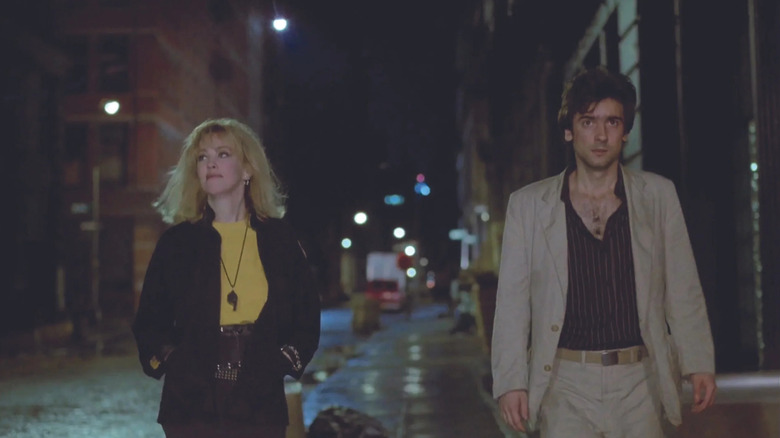
One way that the "After Hours" reference in "Caught Stealing" functions is to give audiences who've seen the former film a hint as to the type of movie the latter is. After all, both films are NYC stories, they each concern the city's secret underbelly, and while "Caught Stealing" takes place over several days while "After Hours" is just one night, they both belong to the subgenre of the "Everyman who gets in over his head" comedy. Both movies also share a bit of the same tone, too. "Caught Stealing" is much more of a noir while "After Hours" is more of a surreal farce, yet the two films make a meal out of subverting audience expectations, at least tonally. There are moments in "After Hours" that feel akin to a horror film, while "Caught Stealing" has a cruel streak within it, one that acts as the peanut butter to its chocolate sense of humor, so to speak.
For someone taking a quick glance at Dunne appearing in both "After Hours" and "Caught Stealing," they may conclude that they're intended to be the same Paul. While there's something ironically funny about the office drone being transformed into a wild and wooly hard partying Lower East Side bar owner, the math doesn't quite add up, at least in terms of years of age if not character. Certainly, there's nothing in "Caught Stealing" to imply that this might be the same person. Yet the characters sharing the same name is more than just an indication that the reference is being made. It's also referring to how each Paul is a mirror image of the other, the same man physically but not spiritually. Dunne's Pauls are men on two sides of a coin, one captured by conformity (despite trying to break out of it), the other too ensconced in hedonism to recognize a problem until it's too late. One of the beautiful things about NYC is how these types of people can share the same space. Similarly, one of the cool things about cinema is how they can also, as in this instance, share the same face.
If you're looking for the easiest way to keep up with all the major movie and TV news, why not sign up to our free newsletter?
Read the original article on SlashFilm.
